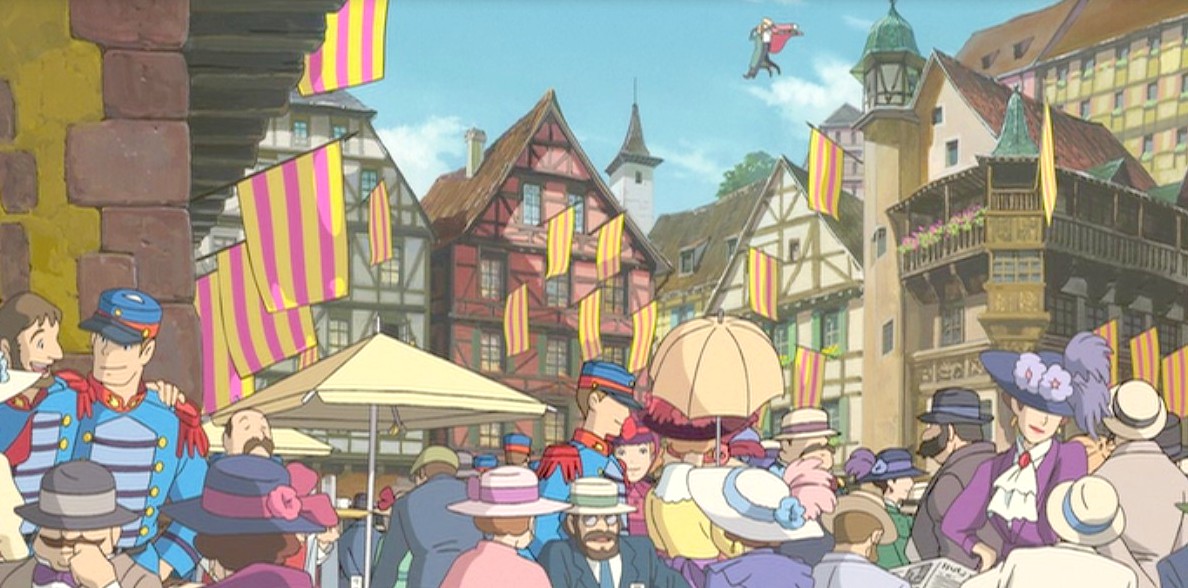If one aims to understand how Japanese society and cities have evolved in the last four decades, one need not look much further than the Studio Ghibli catalogue to gain a sound semblance. Founded by Hayao Miyazaki, one of Japan’s most awe-inspiring animators and storytellers, his stories have always had an element of the natural and the built-up interacting with each other.
Japanese society is a unique one, in that it has had to reassemble its urban lifestyle a great many times. Japanese culture welcomes ruination and renovation as a part of life. Re-envisioning urban spaces each time post an incident rather than just reviving it.
Since its inception almost three decades ago, through a score and two films, Studio Ghibli has been portraying the evolution of Japanese society through its stories. Mostly critiquing the country’s postwar expansive urbanisation efforts which swept away large parts of Japan’s natural features. While their movies have always given a sense of the insignificance of humans in face of the grandeur of nature, they hardly pit one against the other. Rather, they try to show a way for their congenial coexistence. At the same time, deliberately or accidentally, most of these films also provide appreciable input on what a well-planned citizen’s city looks like.
Also read: Studio Ghibli Films May Be Just What You Need
Whisper of the Heart, set entirely in Tokyo, humanises the city’s concrete jungle, putting forth its softer elements through various shots. The protagonist, Shizuko’s exploration of the city mirrors the viewer’s exploration of the storyline. The city blends with the story, as dynamic and detailed as any character, rather than merely something in the background.
On the other hand, Only Yesterday, which depicts the gap between rural and urban living, shows the monotony and loneliness urban life brings. Through repetitive and condensed building structures, it showcases the over-urbanised city, which aces at being impersonal. Their citizens are nondescript. As more people come into these vehicle-centric cities, they experience more solitude, loneliness, and loss of public life, which Taeko does. A product less of cold human behaviour and more of an urban design that encourages the privatisation of space.
Miyazaki and other animators at Ghibli aren’t just animators capable of aptly portraying urban reality on screen. They are also exceptional city planners who through their extravagant yet grounded illustrations, bring forth worlds that though feel real, are superior to ours in design and function. The cities, spaces and architecture depicted within these films are not lesser to the chronicle but rather essential to it, making you want to be a part of it.
The cities of Frankfurt and Paris inspired the town in Howl’s Moving Castle, while Visby and Stockholm inspired the town of Koriko in Kiki’s Delivery Service. All towns are well-known for their walkability and the quality of public spaces. Though not necessarily political, through its movies the studio has conveyed criticisms of the extant actuality of cities. Modern-day cities have become spaces that have no public life or open public spaces for people to enjoy their time in. No facility for meeting the basic human needs of interaction, inclusion, and intimacy, becoming more individualistic for industrial profits and changing lifestyles.
These films have always emphasised more on the inhabitants of the cities and the citizenry it houses, urging us to look at cities as places where people live and not just as engines of economic growth. One way the films achieve this is by including as much stillness as action. Frames are spent on letting the characters take in their surroundings in scenes popularised now as anime aesthetics.
Not only are the drawings beautiful, almost all the films spend enough time on these frames, allowing the audience to take in the beauty of the landscape. Ghibli protagonists have a strong bond with the spaces around them. They frequently indulge in walking, admiring the city as a work of art, and taking their audience along. By focusing on public facilities, these films not only romanticises them but also answers the question of how to better design our public spaces to make them more utilitarian for residents. Making the characters use public spaces like a bench in the park, or a seat in the public library, or on [public transport, to further the plot than placing it in a cafe or pay-to-use spaces shows a communal city. One reclaimed by its residents.
The films by Pixar too have masterfully looked at how the cities of the present and the future would look — be it through the earth past the point of return in Wall-E, that gives a peek into the dystopia we are heading towards if our production and consumption trends are not kept in check. Or through an old man in Up trying to find his peace away from the insipid urban sprawl but being forced out to make way for upzoning. Or through an exploration of the nooks and corners of Paris in Ratatouille.
But with the films by Studio Ghibli, it’s a different approach. Extra attention is paid to background characters. They don’t stay motionless, but do their work, and interact with their surroundings. And cities aren’t just locations the story is set in, but rather vital contributors.
The urban revolution is already here. With seven out of 10 people projected to live in urban areas by 2050, cities and their design would be the most influencing factor in affecting human lives. City planners could learn a lot from Ghibli movies, especially how to kindle wonderment in the city in its residents and visitors.
Priya Singh is a researcher and an accumulation of antitheticals.
Featured image: Studio Ghibli

